Always looking for ideas to help our planet as well as our pockets, this year we have some ideas that will help everyone to have an enjoyable Christmas without creating unnecessary waste.
But don’t worry, we are not suggesting a miserly, scroogy Christmas, just one that won’t cost too much and will not harm our planet.
The following tips are easy to follow and don’t require much (or any) effort, so read on and make this your Greenest Christmas yet.
In no particular order, here are our top tips for a Green Christmas.
Food
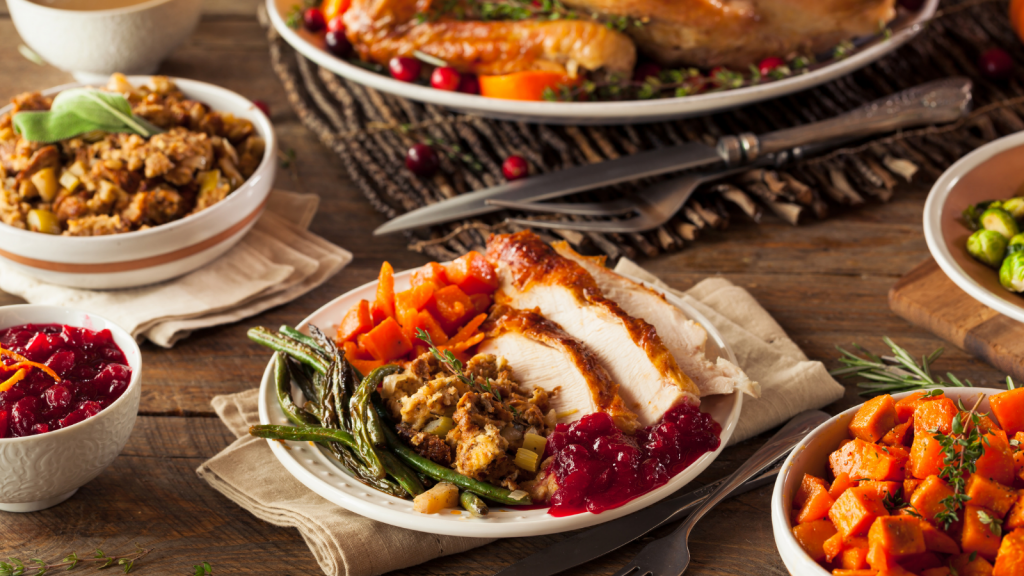
One of the best things about Christmas is all the special food that is available – yum yum! But thinking carefully about the types of food, where it comes from and how much you buy is very important.
Buy local – Try to buy fresh, local ingredients that haven’t travelled thousands of miles. Even better—buy local food from small, local shops near home or work.
You not only save emissions from driving to big out-of-town shops, but also provide jobs and a livelihood for those who own and run small businesses.
Try Plant-based food – Plant-based meat substitutes are an easy way to create greener versions of favourite dishes.
Prevent food waste – So much food is wasted each year, and everyone can help by planning meals carefully and not over-buying.
Once the big day is over, think carefully about storing spare food to use in some tasty leftovers recipes like these.
Mindful Gifting
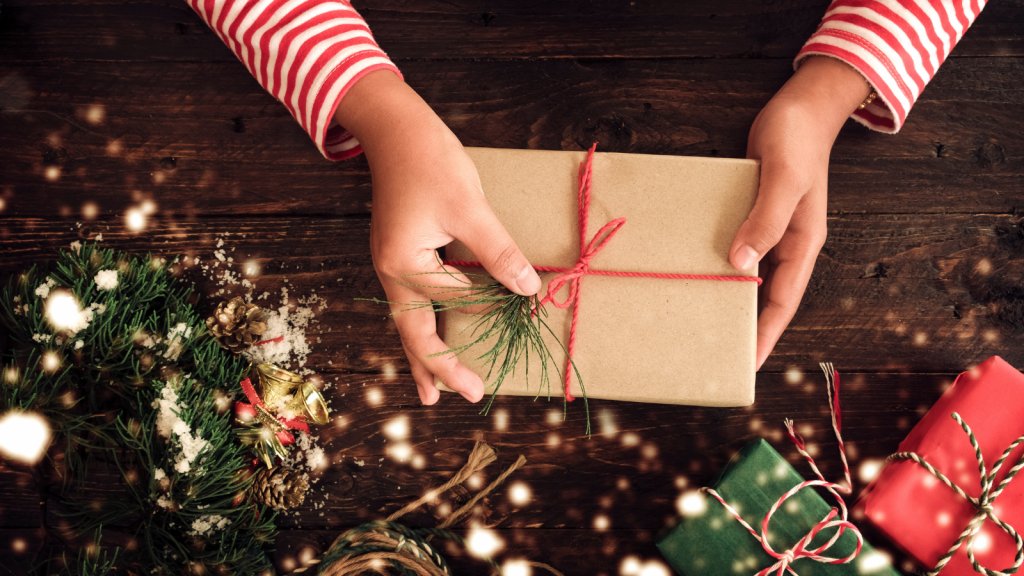
While the best choice is to minimise gift-giving, it can be difficult to cut out all gifts. Instead, we can be more mindful when gifting to others.
Let’s quit buying those junky token gifts and consider some greener alternatives:
Joint or Sharing gifts – As we get older, inevitably our families get bigger, which may mean we feel compelled to buy more and more gifts. Also, smaller, more affordable gifts for many people, are usually unappreciated and end up in a drawer somewhere or in a landfill – and we probably all have enough socks and pants!
So why not club together with family or friends to buy a more meaningful gift and avoid the “novelty“ gifts that have no real value?
You could try Secret Santa – where one person buys a gift for a specified person up to a certain amount of money, or do it White Elephant style – everyone buys one (universal) gift. These are numbered and go under the tree. Everyone picks a number and takes the corresponding gift from the tree.
Pre-loved Gifts – This is a tricky one! Treading the line between appearing miserly by buying cheaper second-hand goods and trying to save the planet by not wasting any existing resources, can be stressful and not fully understood by the recipient of the gift (or their parents!)
The success of this strategy will depend on the environmental attitudes and values of your friends and family, so consider this before buying that beautiful vintage dress or Little Tikes police car off Ebay!
Give experiences – Experiences are a great alternative to physical gifts. The idea is to give memories, not Christmas tat!
Here are some favourite experiences that we’ve given or received:
- Admission tickets to a family theme park or annual membership to a local attraction or museum.
- Tickets to a local sports event.
- A spa day
- National Trust membership
Consumables – Gifts of food and personal care items are always a reliable gift option. They also make for a greener choice because they’ll be eaten or used up in short order! That means no lingering clutter or yet another item to purge one day.
Whether homemade or shop-bought, consider consumable items. They can be a lovely, clutter-free alternative to generic token gifts.
Green items – Green gifts can be a fun, easy way to help others live more sustainably. Below are some green gifts we’ve given or received:
- Stainless steel water bottles and straws.
- Solar powered battery charger.
- A tree or garden shrub
- A David Attenborough book!
Your green gift may even inspire your friends and family to incorporate more green practices into their life!
Practical items – Choose items that are needed/useful and will be put to good use. This means less clutter and less junk going to landfills.
Digital gifts – These consume a fraction of the resources of physical gifts. By giving digitally, you’re cutting out many of the resource-sucking processes like manufacturing, packaging, shipping, storing, displaying, wrapping, and disposal.
Digital gifts are also perfect for last-minute gifts since you can purchase and gift them almost instantly. Plus—there’s no need to post them, which saves you money and minimises the carbon footprint of your gift.
Some examples are:
- E or Audiobooks.
- Music and movies.
- An online course.
- Electronic gift cards.
- A subscription to an entertainment service (Netflix, Disney+, Spotify) or magazine.
Charity Gifts – Too many people do tit-for-tat giving at Christmas. The usual result? Unwanted tat. Instead, give a gift to charity in someone’s name – then you know your money is paying for something useful.
Some charity ‘Gifts that give’ we like are: Good gifts Wateraid Macmillan Cancer Care
Cash – Always welcomed, especially by teenagers! Perhaps think of an interesting and environmentally educational way of packaging it – maybe in a packet of wildflower seeds. Make the gift extra green by printing the gift card at home and gifting it in a recyclable paper envelope. This reduces plastic use and carbon emissions.
Investment – Always a good idea, especially for younger children who usually have enough toys etc. Set up a named pot which you can add to every Christmas and maybe birthdays too. Have a look at Moneybox for a simple way to save – or speak to us!
Gift Cards – For those who are uncomfortable with cash gifts, gift cards to favourite stores are a good alternative. They’re convenient for the you and easy for the giftee to spend—a win-win for everyone!
Make a List

Now that you’ve minimized the number of gifts you’ll need to buy, it’s time to make a list. There are so many benefits to creating and maintaining an annual Christmas gift list.
For example, a list helps to:
- Stay organised and save time
- Save money by planning and buying things when they are on sale
- Keep track of what you still need to purchase
- Remember gifts you purchased during the year and where you put them!
- Prevent over-buying (you no longer need to keep “just-in-case” gifts on hand)
- Prevent duplicate gifts (whether from year-to-year or for different people)
- Never forget someone
- Avoid last-minute shopping runs
- Minimise shopping trips (saving time and fuel).
We are confident that a good list will help you have a greener Christmas by saving you money, fuel, and time!
Avoid Plastic
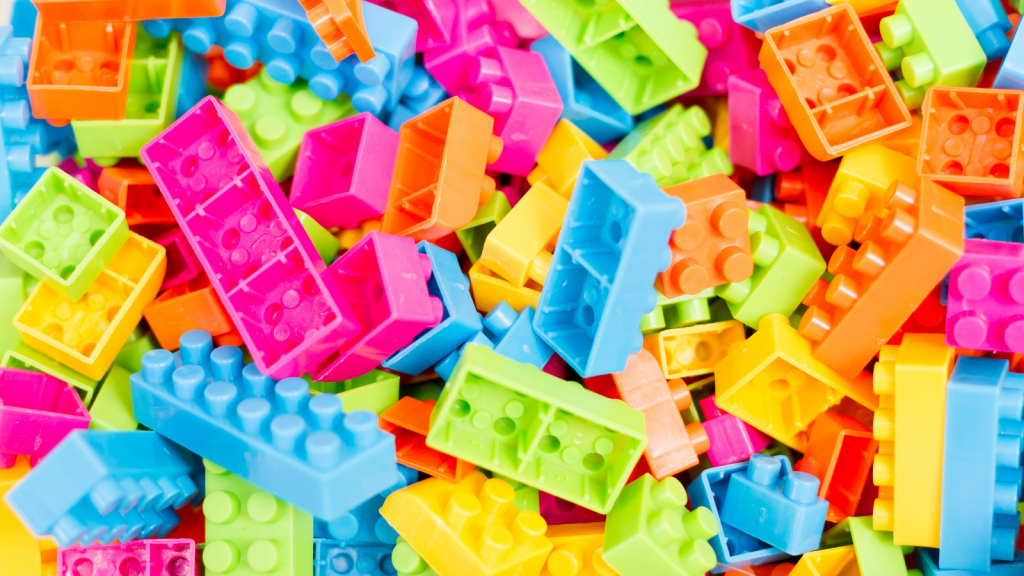
Unfortunately, many gifts and toys for smaller children are made from non – recyclable plastic which will inevitably end up in landfill.
Perhaps consider toys that are more environmentally friendly – made from wood or other sustainable materials. A good selection is available here.
Similarly, some crackers contain small plastic novelties that go straight in the bin. A more eco approach to creating a bang at the Christmas table can be found here.
Many other options are available and worth a little research to ensure greater sustainability.
Go Green with your Wrapping
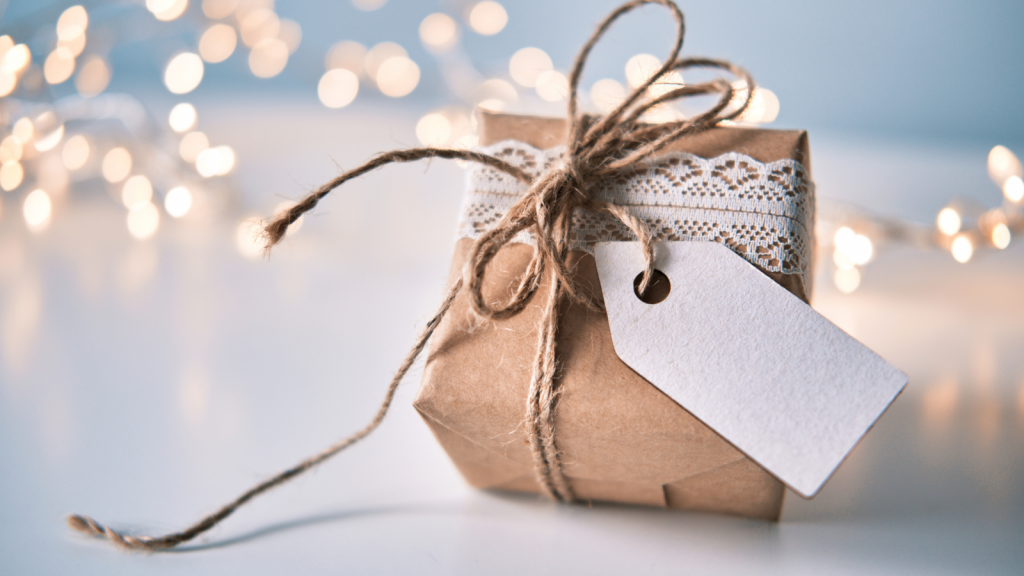
Here are some of our favourite ways to go green with gift wrapping:
DIY reusable cloth bags – Choose pretty Christmas fabric and make simple drawstring bags (or use old pillowcases for even more green impact!) Not only are they pretty under the tree, but they’re also a huge time saver as it takes minutes to bag a gift and tie it up and you can reuse them every year!
Reuse paper gift bags – Don’t throw out those paper gift bags—save them to reuse! If you must buy a new bag, make sure it is 100% paper with no laminated plastic coating. For all the same reasons, reuse ribbons and bows.
Christmas Cards
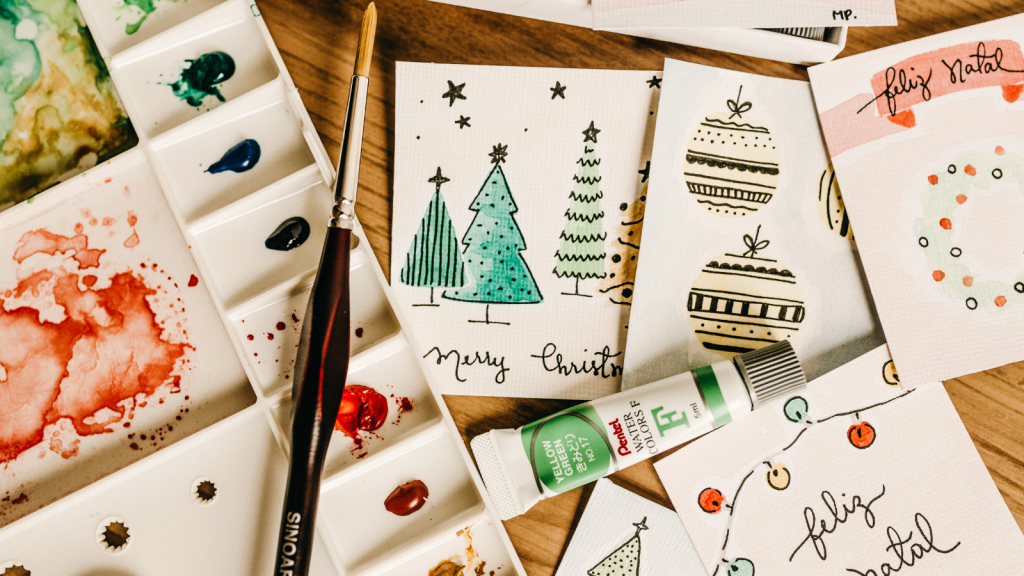
As nice as it is to give and receive Christmas cards, we should all try to be more mindful of the materials they’re made of. Most of us don’t realise that glitter, foil, or other accessories make Christmas cards difficult or impossible to recycle.
Here are some tips to minimize the environmental impact of cards you give and receive:
- Minimize the number of cards you send out.
- Choose 100% paper cards and envelopes (avoid embellishments like glitter, foil, and metal/plastic accents).
- Send digital cards instead
- Upcycle the cards you receive (some great ideas here.)
Christmas Tree

Buying an artificial tree will eventually contribute to plastic waste and buying a real Christmas tree is more environmentally friendly than a fake one.
Use LED lights on your Christmas tree – they use less energy and look just as good! Also, switch off your lights at night, it’s safer and won’t cost the earth.
If you don’t already have a million tree decorations, make some of your own using natural products like pinecones instead of tinsel and plastic balls.
Travel

After the restrictions that were in place last Christmas due to Covid, everyone is looking forward to spending this year with their loved ones.
This may mean a lot of extra cars on the road and many more aeroplanes in the sky, neither of which will help the green agenda.
Our advice here is to just use common sense:
- Don’t travel if unnecessary
- Share cars where possible
- Use public transport
- Make full use of Zoom and Facetime etc.
- If you have to travel, consider a carbon offset scheme. We like Ecologi
Summary
There are so many easy, approachable ways to have a Green Christmas—and there’s no need to sacrifice any fun or enjoyment to do it!
- Limit gifts: Ask your family and friends to consider going gift less or gift share. You’ll save money, time, and stress—and have more energy to focus on quality time together.
- Make a list: Get clear on what you need to buy, and for whom. This will save you money, time, and stress while reducing your consumption and carbon footprint.
- Get creative with gifts: Experiences, cash, gift cards, or used items are more-sustainable alternatives to giving kids yet another brand-new toy.
- Gift mindfully: Instead of buying junky token gifts, get mindful with your gifting. Doing so will help to minimize the impact of your gifts on the planet and your wallet.
- Go green with your wrapping: Reusing and upcycling can reduce or eliminate your need for new wrapping materials and send less waste to landfills.
- Go green with your Christmas cards: Most of us aren’t aware that the pretty cards we give and receive are not recyclable. Learn more, then seek out more-sustainable alternatives.
- Avoid obvious things that cause planetary distress – plastic, emissions, waste etc.
- Plan for next year: Save up for stress-free Christmas spending and consider other ways to save money and time next year.
We hope these tips for a Green Christmas have been useful. There are so many easy, simple alternatives to conventional gifting, shopping, and wrapping. If we all make a few small changes, we’ll be helping to ensure many generations of Green Christmases to come.

